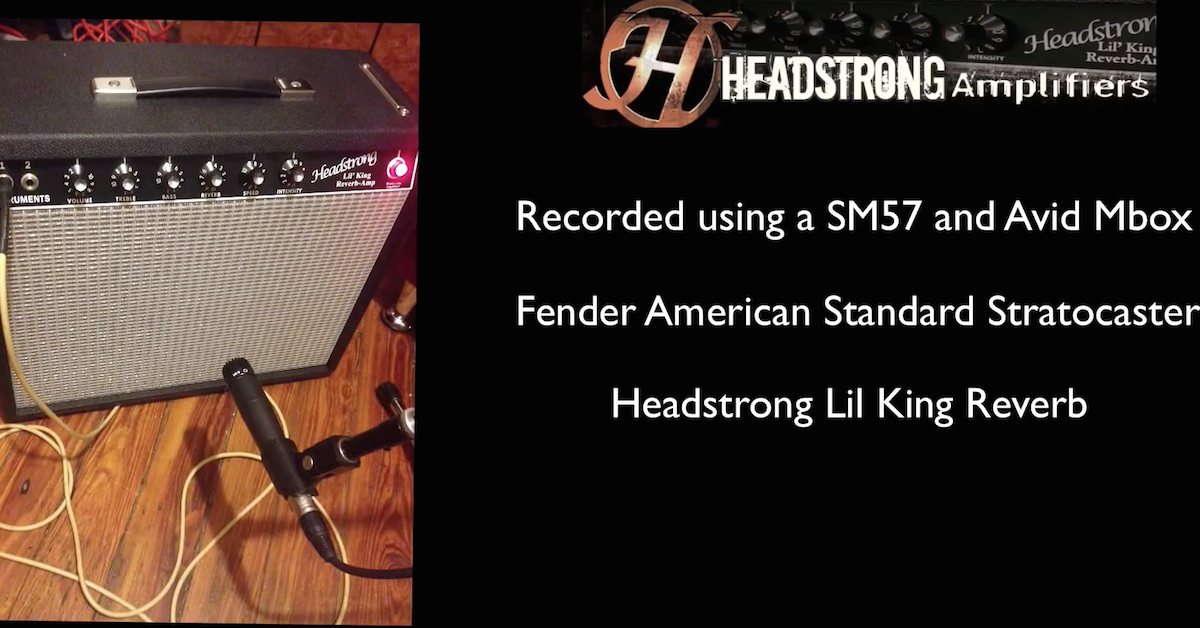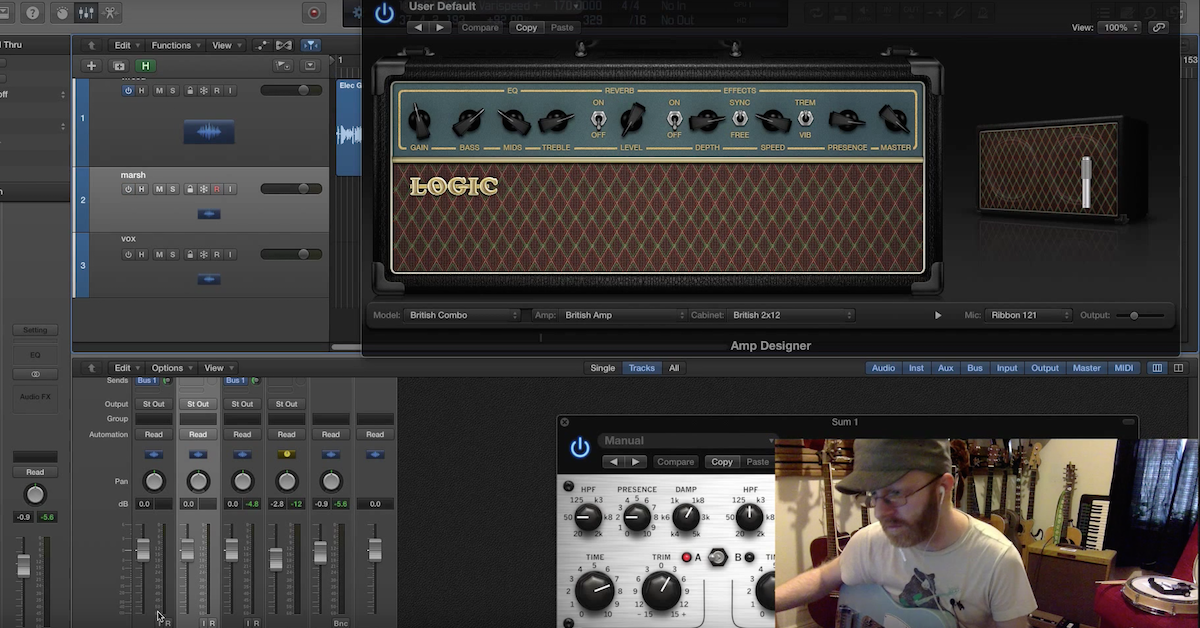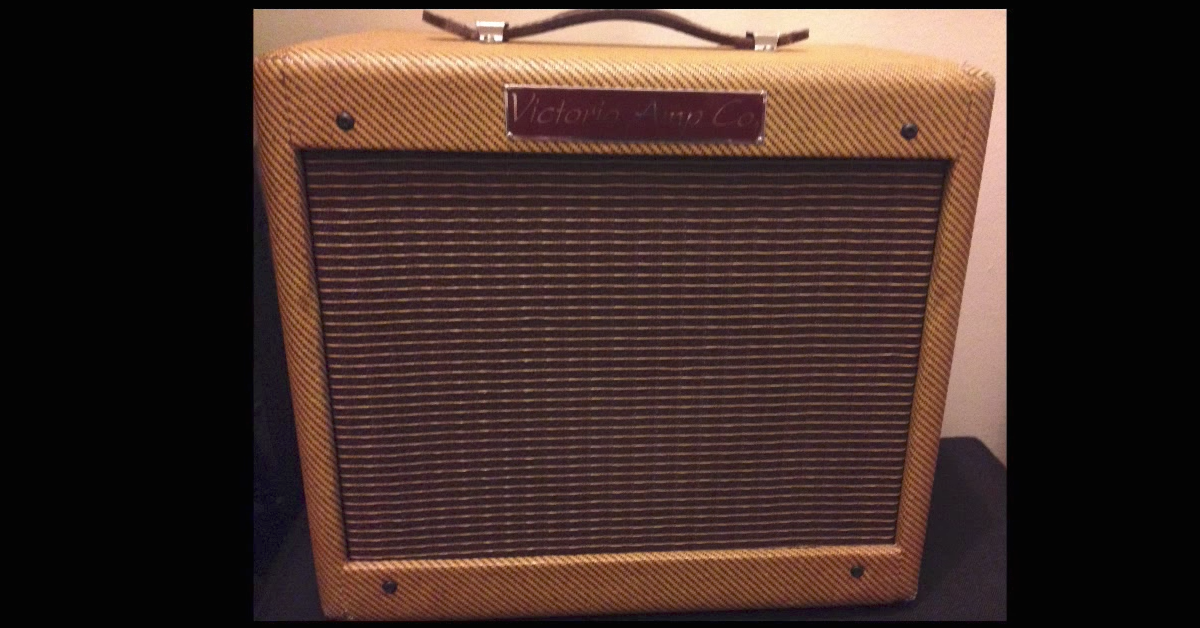5 Tips for Getting Cleaner Guitar Tones from a UAD ’55 Tweed
Article Content
I was talking to someone recently about the Universal Audio Fender ’55 Tweed amp sim. They mentioned having a hard time getting the sounds they wanted from it. I realized this didn’t have so much to do with the plugin as much as their specific knowledge of tweed amps.
Different Era Of Tweed
One thing that can confuse guitarists and producers is there are a few generations of tweeds. They not only look slightly different, but they have different amounts of gain.
An early 50’s tweed doesn’t have quite as much grind as a late 50’s tweed. Universal Audio modeled a late 50’s tweed, so this means more gain.
I’m a tweed nut, so I tend to geek out over this. On my band Fife & Drom’s newest record, I tried three 50’s tweeds to find the one I liked.
Tweeds Are Gain Amps
When one starts using a tweed they might be surprised to find it’s not a very clean amp. This is not to say they don’t clean up — they do it in their own way — but it’s definitely not blackface Fender clean.
I find this confuses some people at first. Either because they’re used to the more available blackface models or they’ve heard some of the modern fender amps that come in tweed covering. These modern tweed amps have nothing in common with the old tweeds.
Salt of the Earth
Tweeds are earthy. With my real tweeds, I can get them to clean up a little bit more than the UAD plugin allows for, but again, this also depends on the year of the tweed.
If you’re looking for pristine cleans, this is not the plugin for you. If your perception of clean is Steve Cropper, then you’ve found the right amp sim.
Input Gain Staging
The Universal Audio Tweed acts like an amp. If you hit it harder, it will overdrive more. If you back off the input, it will clean up more.
There are two ways to approach this. The most obvious is the volume knob on your guitar, you didn’t need captain obvious to tell you that. The less obvious is the input gain knob on your interface.
I run the Tweed Deluxe in a unison slot because I print the sound. I’ll spend a little time messing around with the input gain on my interface.
Don’t just think of the volume knob on your amp or guitar as the only gain stage. Mess with the input gain, but keep an eye on the clip indicators. Don’t be afraid to boost or cut the master volume depending on your input gain.
Also, knocking back the volume knob on your guitar versus changing the input gain on the interface sounds very different.
Microphone Balance
There are certain microphone combinations that are going to clean up better than others.
One complaint I’ve heard from a few people is the ’55 tweed sounds fuzzy all the time. First off, tweeds are fuzzy and will never be perfectly clean. The combination I use to get a little bit of a cleaner sound is a condenser mic (Neumann U67) paired with a dynamic mic (Shure SM57). The condenser mic provides more attack.
Depending on what guitar you’re using, you may need to experiment with different combinations. When I use a Gibson 335, I go for the condenser (U67) every time.
Make sure you experiment with the low-cut filter and the off-axis option. There are occasions where I just use one mic as well. You don’t always need to use two microphones.
Speakers
There are three options for speakers. This is a nice addition and opens up some possibilities. The Jensen is what would have been in the original amp. Over the years, people have replaced the original speaker and Universal Audio provided a few common replacements.
A quick swipe through speaker combinations each time you’re getting a sound is helpful. It seems simple, but the components of a tweed amp are more interactive than a lot of other amps.
Jumpering Channels
For those that haven’t used a real tweed or Marshall Plexi, the input section could be confusing.
On both Fender Tweed and Marshall amps there were two inputs with their own volume, but not their own EQ.
Some players got hip to the idea that you can plug into one input, use a patch cable to come out of the same input and plug into the second input. They call this “jumpering” channels or “bridging” channels.
You can use one channel to drive the other. It’s a crafty way to get more overdrive. Which channel you bridge to the other changes the tone as well.
On some amps, one channel tends to be brighter than the other. In this case, the order of the channels changes the tone quite a bit.
Universal Audio modeled both the ’55 Tweed and Marshall 1959 to bridge channels.
In general, if you’re looking for a cleaner tone, don’t bridge channels. It will light the ceiling on fire though in case you need a little more pizazz at your grandmas 93rd birthday party. Tequila shots for everyone!
EQ
The EQ section on a tweed deluxe can’t get any simpler. You can find all the adjustments you’ll ever need below the “Tone” knob.
It seems overly simple, but the single knob EQ adjustment on these amps is lovely. Simple and sweet. I always do a sweep on this knob when dialing in a sound. If you’re playing with the microphone settings, make sure you experiment with the tone knob at the same time.
You see, they all work as a team. This is why I think some people have a hard time with the plugin at first. It’s very interactive. Don’t set it and forget it. Twist a little here and there and then a little here again …
Listening Examples
Example 1: Gibson 335 into the top Instrument Channel. I’m not using hot pickups. They’re Florence ’59 PAF pickups with a fairly low output.
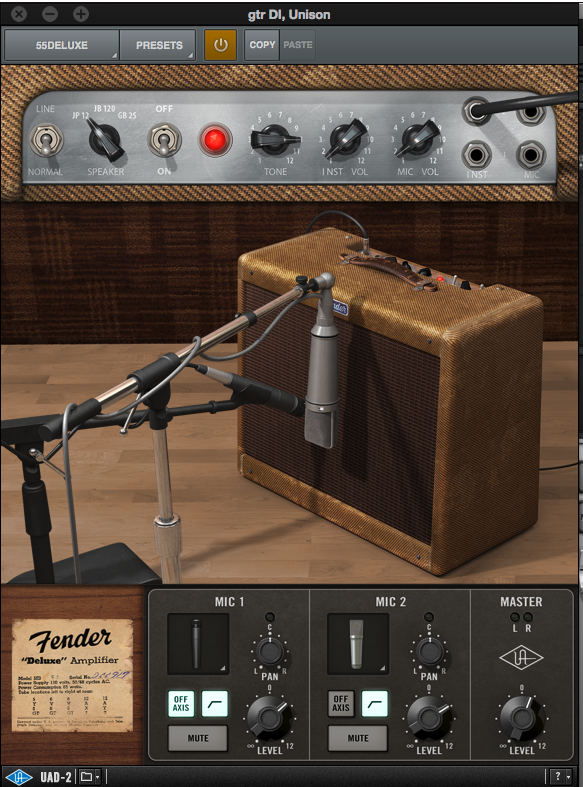
Example 2: Gibson 335 into the bottom instrument channel.
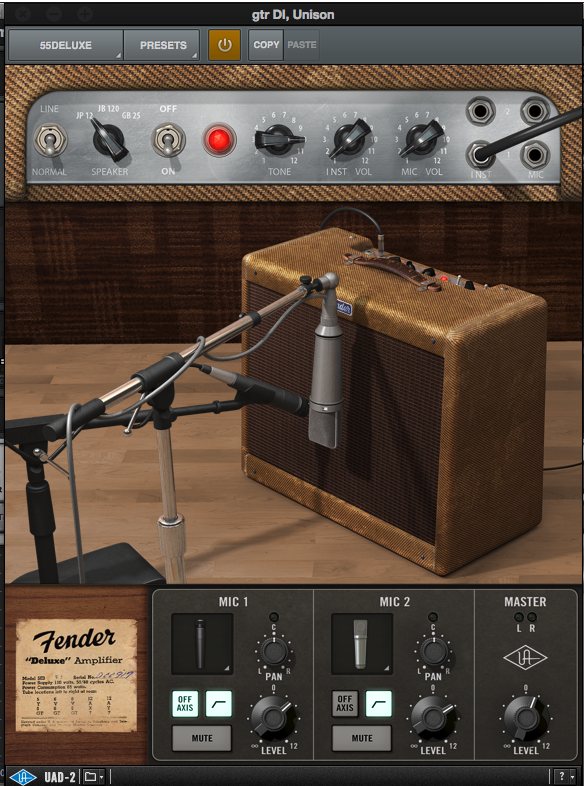
Example 3: Fender Telecaster with Florence ’52 pickups. Again, not high output pickups. Running into the top instrument channel.
Example 4: Fender Telecaster running into the bottom instrument channel.
Example 5: The same telecaster, but I took the low cut switch off the mics and boosted the tone a bit. I’m also digging into the guitar a little more. Top instrument channel.
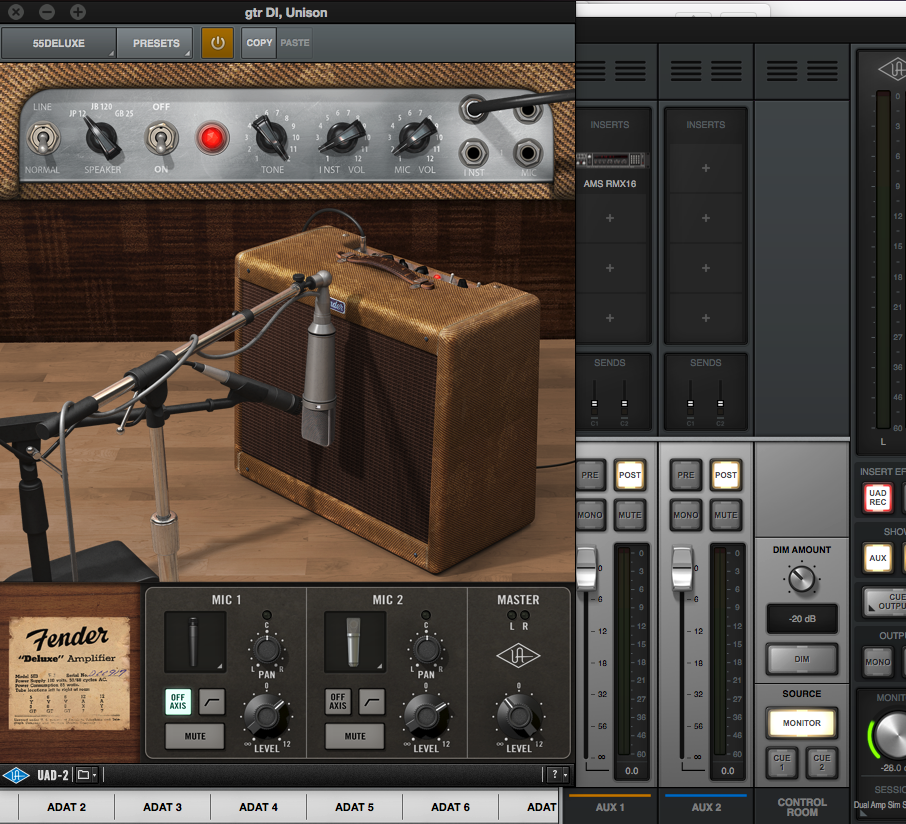
Example 6: Telecaster digging into the bottom instrument channel.



